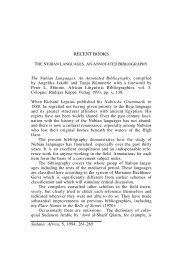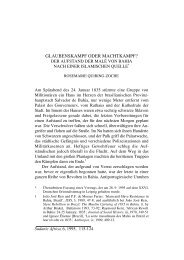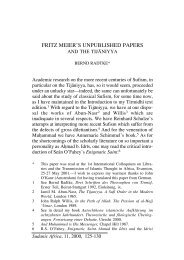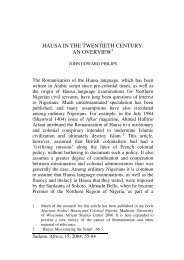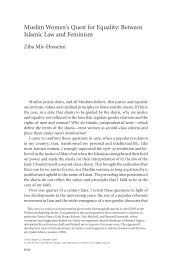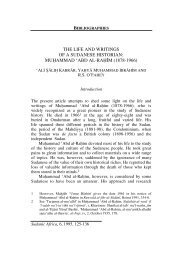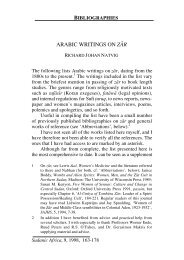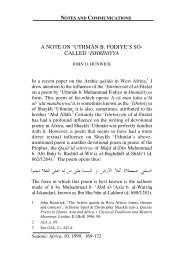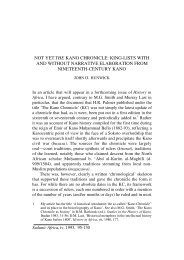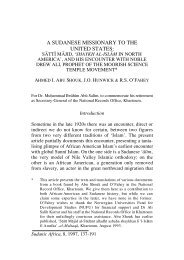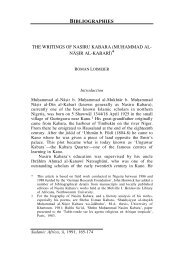Create successful ePaper yourself
Turn your PDF publications into a flip-book with our unique Google optimized e-Paper software.
172 NOTES AND COMMUNICATIONSMecca and Medina, for example, includes the ‘shrine’, that is,the Kafiba (House of God) and the Prophet’s tombrespectively, whereas the outer circle consists of a specifiedarea around the Holy Mosque in Mecca and the Prophet’smosque in Medina. Marmon considers the sultan himself asthe ‘shrine’ and the Citadel, which is like a city, the outercircle. In addition, she quotes the words of a Mamluktopographer who draws a striking comparison, according toher, between Cairo Citadel and the noble Jerusalem, the thirdholiest sanctuary in Islam. But neither the sultan nor his tombis considered sacred in Islam.Marmon’s attempt to include the boundaries of theharem, the sultan and his tomb under the sacred is, in myview, due to the structural technique she adopts. Likestructuralists she looks for data which can be interpreted tosupport her argument and ignores what contradicts it. Forexample, she argues that the eunuchs guard the religioussanctuary from the danger of fitna (sexual temptation orpolitical disorder). But the eunuchs themselves were involvedin two fitnas causing political unrest, and in one of them tookrefuge in the sanctuary they were supposed to guard, andfought their enemies with firearms. 4As said earlier Marmon focuses on the study of eunuchsas mediators. Since the Mamluk sultanate witnessed theemergence of the eunuchs of the Prophet’s tomb, Marmonbegins her study by examining their role in Mamluk Cairo,where they, being neither men nor women acted assupervisors and guardians of the harem and mediated betweenthem and the master of the house, and could therefore crossthe harem boundary. They also played the same role ofmediation between the sultan and his subordinates includingthe emirs and between his tomb and strangers except recitersof the Qur√applen. Here Marmon could have argued that the4 fiAbd al-Bapplesi† Badr, al-Ta√rıkh al-shapplemil li’l-Madına al-munawwara,3 vols., Al-Madına al-munawwara: fiAbd al-Bapplesi† Badr 1993,II, 384-8 & III, 21-3.



